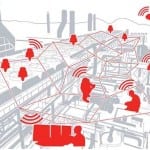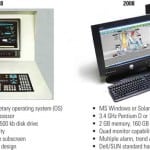Control rooms are vital for organizations to efficiently and effectively monitor multiple information streams and make accurate mission-critical decisions. With an ever-increasing number of content sources and applications to manage, in addition to collaborative information integration needs, today’s control rooms need to enable system management that is efficient and cost-effective, while at the same time offering maximum operator comfort.
Whether it’s for monitoring, decision-making, responding, controlling, collaborating, or communicating, control room solutions are an essential component to daily operations, allowing for more efficient work and better decision-making. Power plants can benefit from control room solutions in a number of ways: in their process facilities; for surveillance; in facility situation rooms; for command and control; for traffic management; and for broadcasting distribution monitoring (Figure 1).
 |
| 1. Power plants can benefit from control room solutions in a variety of ways, helping operators work more efficiently and make better decisions. Rows of monitors visible from multiple workstations enable several workers to have input simultaneously on operations. Courtesy: ATEN Technology |
In utilities and process control centers, operators continuously monitor and control constant flows of manufacturing, industrial control process, infrastructure/equipment status, and the dynamic change on demand to guarantee production and distribution in the best possible way. The challenges include providing an integrated real-time overview of process flow and equipment status for better situational awareness and decision making, along with a flexible and ergonomic system deployment for efficient yet managed access to devices. Information integration and visualization are especially important in these scenarios—from detailed network distribution information to topological overviews of the service area—in addition to redundancy/backup support to ensure continuous operations.
Control Room Trends
Control room operators are increasingly leveraging Internet Protocol (IP) networking technology. Utilizing “over IP” technology in control rooms for video, audio, and control data distribution and extension offers more flexibility and scalability for centralized or distributed control room operation. In control room scenarios, the migration from direct-connected systems to those that make use of IP networks has had various advantages—mainly, that controllers can configure connectivity architecture and the overall size of the KVM (keyboard, video, mouse) installation based on specific requirements, and systems can be designed to accommodate large distances, high performance, and varying levels of system redundancy and resiliency.
The major benefit of IP-based KVM in the control room is almost limitless scalability and flexibility. An IP-based KVM system also provides more extension options beyond traditional keyboard-monitor-mouse, including server sharing, video extension, and multicasting. For these reasons, IP-based control units mean you can upgrade your IP management efficiency by increasing productivity and reducing operational costs.
IP-based solutions that utilize TCP (Transmission Control Protocol)/IP for the communication protocol allow control room operators to monitor, access, and troubleshoot control room assets from any networked computer. This also means that image data from secondary sites or anywhere else on the network can be displayed on the main control room video wall, enabling a faster response to mission-critical emergencies.
Visualization and information integration also are increasing in importance. Monitoring and sharing the ever-expanding amount of video and data streams are essential for control rooms. High-quality video performance with the best resolution available makes possible rapid analysis of evolving situations and real-time decision-making (Figure 2).
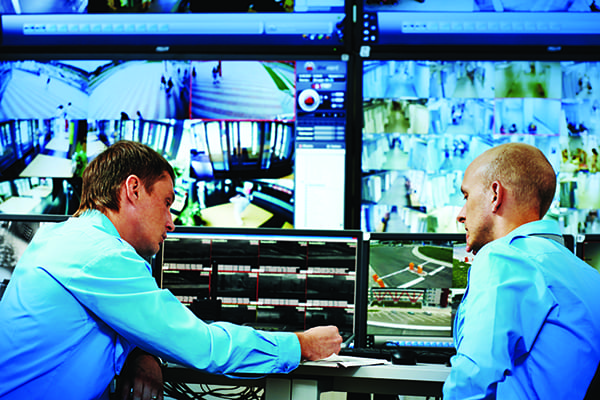 |
| 2. Control rooms that offer the ability for workers to monitor and share large amounts of video and data enable more rapid analysis of evolving situations, along with the ability for real-time decision-making and collaboration. Courtesy: ATEN Technology |
Display solutions extend from desktop screens for operators to large-size video walls for better collaboration, while multiple displays at workstations help operators visualize more information and improve operation. The importance of visualization and information integration for monitoring and decision-making in a control room environment has crucial implications for a system’s video quality and content distribution capabilities. In scenarios where video walls must be operational 24/7, solutions must allow for high-performance processing that enables video signals to be converted and scaled to meet display requirements—single, dual, or multi-screen display formats—at resolutions up to 4K. And with multiple video and data sources connected to the system, it should also be possible to create individually tailored video wall solutions that deliver high-quality resolution images to all displays in the control room in any configuration.
Control room operators perform a demanding role in monitoring and controlling complex systems, where the consequence of error is potentially devastating. Ergonomics are therefore optimized to minimize the risk of human error and maximize performance and efficiency. A more ergonomic design (Figure 3) results in a better workflow and device management. Call it intuitive access and control.
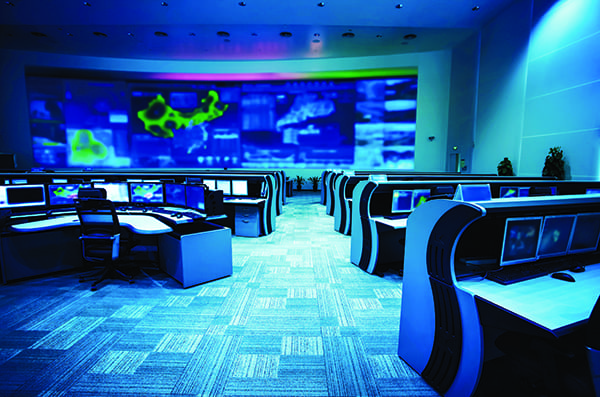 |
| 3. This control room looks futuristic, and it’s a showcase for ergonomic design. The workstations are positioned for clear sightlines of the large video monitor at the front of the room, while enabling easy visualization of multiple desktop monitors in a larger and more open workspace. Courtesy: ATEN Technology |
In addition to extending hardware lifecycle and performance reliability by locating machinery away from operators in ideal environmental conditions, it is imperative to consider the operators themselves. Control and peripheral equipment should be located optimally, and displays should be angled for comfort and ease of viewing.
More importantly, access to controls should be intuitive to create an environment that enables operators to stay alert and in control so that when incidents do occur, responses can be instant and appropriate resources can be immediately deployed. For these reasons, operator workspace and control solutions that enable multiple computer desktop workflows are the way forward.
Utility Company Use Case
A state-owned power distribution company was looking to redesign and upgrade its large-scale dispatch control center to centrally monitor and manage dual-display and single-display high-performance workstations. Additionally, it needed to incorporate a KVM solution for up to 96 communication control servers for use by the internal IT staff.
Their challenges included:
■ Integrating multiple single and dual-view high-performance workstations distributed across different areas of the power distribution system.
■ Providing local and remote data center access from the communication control department to the dispatch center and remote access from outside the building by the internal IT staff.
■ Allowing desktop monitor to video wall switching for 2-D visualization of the power grid and geographic information.
■ Ensuring the flexibility to add users and high-performance workstations on the fly.
■ Including backup/redundancy software options to avoid downtime.
Utilizing ATEN’s KE Matrix Management Software (CCKM), a DVI Dual Display KVM over IP Extender, and a 32-Port Cat 5 KVM over IP Switch with Virtual Media, the integrator was able to utilize the power distribution company’s existing network infrastructure to provide remote access, monitoring, and management capabilities, and extended control of both single and dual-view high-performance workstations. Users can now access and manage the company’s communication control servers remotely when away from the office or over the local network, allowing them to be more efficient in their daily routines, minimize downtime, and quickly respond to issues as they arise.
Additional control room solutions could include:
■ Control and operation
■ KVM over IP matrix system
■ Desktop multi-view KVMP switch
■ KVM extenders
■ USB extenders
■ Matrix management software
■ Video wall
■ Modular matrix switches with video wall processor
■ Video distribution
■ Video splitters
■ Wall plates
■ HDBaseT video extenders
■ Fiber video extenders
Control Room Solution Advantages
When contemplating control room changes, selecting the technology, vendor, and integrator are obviously important. However, the following aspects should also be considered:
■ Seamless AV and IT Integration. The convergence of audiovisual (AV) and IT is already evident in many control room solutions. Look for experts who leverage IT/IP technologies as a way of connecting AV and server/device-room components, integrating information for collaboration, and facilitating responsive operations and crucial commands. The solutions offered should provide unlimited scalability, utilize space efficiently, and include re-deployable architecture. The solution should also allow for advanced, interactive, single sign-on management of the whole system, and should be able to leverage existing infrastructure and equipment, or at the very least, the tools to integrate with disparate systems.
■ Ergonomic Approach. Control room solutions should be designed to merge into operator-focused environments that will minimize the risk of human error and maximize performance and efficiency. For example, over IP solutions allow operators to be separated from devices, while safe, secure, remote access is made easy, and desktops and servers are made clutter-free and centrally manageable. Easy-to-navigate graphical user interfaces for convenient, intuitive configuration and operation should be standard.
■ Visual Excellence. This is not referring to an aesthetically pleasing product on the outside (though that’s always nice), rather, the component capabilities must be first-rate. For collaboration-heavy deployments, look for solutions that deliver high-performance image quality to multiple display video walls (Figure 4), as well as to desk console stations for mission-critical operations. Integrated information and visual details in resolutions up to 4K allow for more accurate monitoring, contact collaboration, and proper responses for situations that have an ever-increasing number of sources, authentication mechanisms, and applications to control.
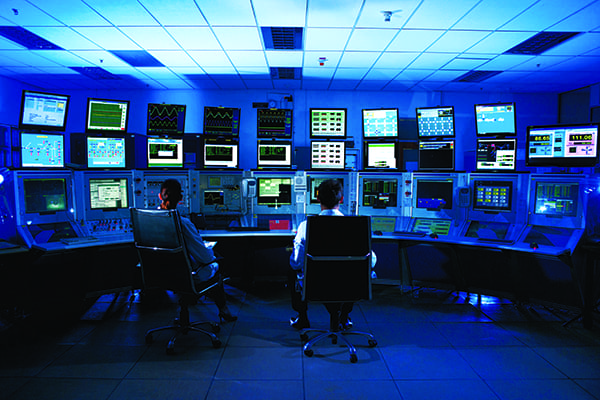 |
| 4. Power plant operations require collaboration, and it’s important to deliver high-performance image quality to multiple display video monitors. The integration of information, along with visual details in resolutions up to 4K, allow for more accurate monitoring, contact collaboration, and proper responses for situations that have an ever-increasing number of sources, authentication mechanisms, and applications to control. Courtesy: ATEN Technology |
■ Security and Reliability. Solutions should provide secure, reliable access to any system across multiple security domains 24/7 (Figure 5). Adjustable authority levels, encrypted communication and log-ins, virtual media data encryption, and vital rapid failover/backup support for systems and operation, from local and offsite, should be available.
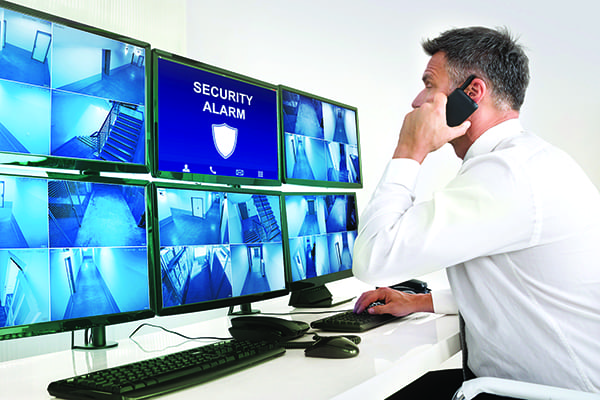 |
| 5. Power plant operators increasingly know the value of security in their facilities. Systems need to be secure, with adjustable authority levels, encrypted communication protocols and data, and rapid response backup support. The ability to monitor all systems from a central location should enhance plant security and increase operational efficiency. Courtesy: ATEN Technology |
■ Flexible Deployment and Management. Solutions should be easily managed and controlled, either remotely or locally across the end-users entire IT infrastructure. Recommended features include flexible authentication, secure access, and instant response.
Overall, seek a partner that understands the increasing complexity of control room requirements and provides end-to-end design and manufacturing, with the goal of increasing security and improving operator efficiency within the control room. Additionally, by building an intelligent, secure, and collaborative control room environment, mission critical systems will be accessible in real-time with the ability to handle mission critical emergencies from any location.
Considerations for Control Room Implementers
Accounting for control room infrastructure technology developments, such as the migration to digital video and advances in computing devices, can often involve great complexity in terms of combining all these requirements to provide flexible information display and user access. Implementing solutions in control rooms requires a sound knowledge of current and future developments in not only network connectivity and multiple IT system management, but also in how the integration of computer operations/control and audio-visual systems (Figure 6) can account for the need for essential decision-related content being available in remote spaces.
 |
| 6. Network connectivity, enabling management of multiple IT systems, is among the developments that can be employed in today’s control rooms. Networks aid in the integration of computer operations and control, audio-visual systems, and other applications that can enhance efficiency. Courtesy: ATEN Technology |
As control rooms are a fast-paced, high-pressure environment with a myriad of technological challenges, meeting these challenges efficiently requires a certain level of technical expertise. System integrators are required to consider many different aspects—solution components need to be reliable, manufactured for quality, and secure—but, along with build quality, the solutions themselves should also ideally provide future-proof infrastructure and investment protection, in addition to guaranteeing network safety and improving operator workflows.
What is needed are control room solutions that provide a networked distributed collaboration system that considers the complexities of signal distribution, the connectivity of both physical and virtual servers, data visualization, professional video walls, intuitive workflows, and operator controls. ■
—Aaron Johnson is a senior product manager at ATEN Technology Inc.
(www.aten.com/us/en/).







